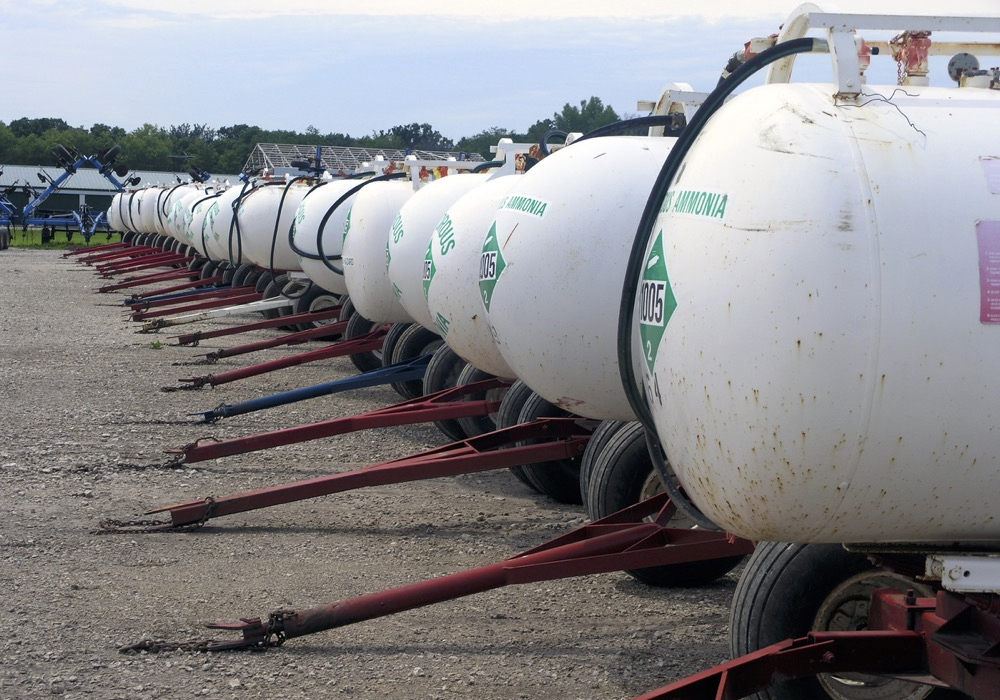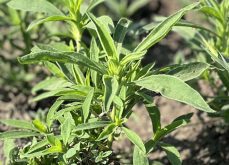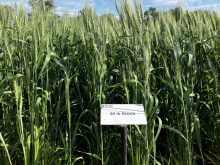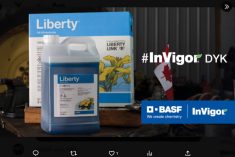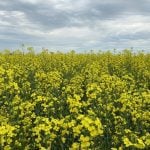How many of you know almost all of the non-nuclear munitions or bomb explosions that occur worldwide are due to the fertilizer nitrogen? There are other explosive chemicals, like potassium chlorate and silver iodide, but they are minor compared with fixed nitrogen.
Dynamite, Semtex, picric acid, gun powder, gelignite and all of those other explosives, shells, bombs and bullets are based on nitrogen fixation, starting with ammonia. Up until the First World War, gunpowder for rifles, cannons and bombs was obtained by refining bat cave droppings, urine, manure and, in particular, large amounts of potassium nitrate (saltpetre) from seabird deposits on islands off of the west coast of South America.
In 1914, the First World War could have ended in one year since Britain controlled the South American nitrate deposits. In 1913, German scientists discovered, by means of the Haber-Bosch process, how to fix and manufacture ammonia on an industrial scale.
Read Also

Claas brings 1000 Series SP forage harvesters to Canada
In mid-August, Claas unveiled its new line of Jaguar forage harvesters at an event in Visalia, California, deep in the heart of that state’s dairy region.
To fix industrial nitrogen, for use as a fertilizer or explosive, takes a lot of energy input. The air is around 80 per cent by volume nitrogen as N2, a very stable unreactive gas. Nitrogen in air and methane from natural gas is passed over catalytic converters. The mixture of gasses is kept at around 300 atmospheric pressure at 500 C (800 F). This heat and pressure cause a percentage of these gasses to combine to form ammonia, NH3.
To produce ammonia, the fixed nitrogen requires huge quantities of energy in the form of heat and pressure plus natural gas. That is why urea is $1,000 or more per ton. Urea is just ammonia combined with carbon dioxide for better stability of the fixed nitrogen, which now becomes fertilizer and a component of almost all explosive formulations.
Thus, to fix atmospheric nitrogen, huge inputs of energy must occur to break the very stable nitrogen gas bond. Consequently, when nitrogen fixation occurs in legumes, non-legumes, bacteria and other forms of life, large quantities of energy are required to make this nitrogen available to plant life.
The production of a pound of nitrogen in fertilizer form as ammonia requires about 25,000 British thermal units (BTUs). One BTU will raise one pound of water 1 F and 25,000 BTUs would raise 100 pounds of water 250 F (do the math).
A significant source of nitrogen fixation also comes from lightning bolts. About seven per cent of the Earth’s nitrogen is produced in the form of nitric oxide (NO) or nitrogen dioxide (NO2), and with moisture quickly forms nitric acid, which is also very reactive and quickly forms nitrate salts such as CaCO3 (calcium nitrate). An isolated Prairie thunderstorm with lots of lightning could provide five to 10 pounds of fixed nitrogen per acre under the thunderclouds.
Nitrogen oxides
Are you confused? There are three levels of oxides, nitric oxide (NO), nitrogen dioxide (NO2) and nitrous oxide (N2O). Nitric oxide and nitrogen dioxide are quickly converted naturally to nitrate (NO3) in combination with any available anions, such as potassium, calcium or magnesium. These are normal nitrogen soil fertilizers.
Nitrous oxide (N2O) is a different kettle of fish. You may know nitrous oxide as an anaesthetic used by dentists, sometimes called laughing gas, which puts you to sleep. Nitrous oxide does not break down easily and is in the top five of the worst greenhouse gasses.
Nitrous oxide is produced by cars (internal combustion engines) and coal-burning power plants. It is also produced by the breakdown of soil nitrogen and soil-applied nitrogen fertilizers to some degree. In the air, this gas is at 333 parts per billion (ppb) with an annual increase of around one ppb. Nitrous oxide is hundreds of times more potent as a greenhouse gas than carbon dioxide (CO2).
Thus, nitrogen fixation in legumes in those pink nodules requires 12 grams of glucose per gram of nitrogen fixed. So, when a nitrogen-fixing legume is growing in a nitrogen-poor soil, the plants must spend at least 10 times in sugar weight to produce one unit of root-fixed nitrogen.
This nitrogen fixing is done in the legume nodules, which takes up a lot of respiration energy — energy the legume plant must transfer to the legume bacteria for them to fix nitrogen as well as letting the bacteria grow and multiply.
To fix nitrogen, the healthy pink legume nodule requires iron (Fe) for the pink hemoglobin, copper (Cu) for the role of the proteins needed for nitrogen fixation, molybdenum (Mo) for the nitrogenase enzymes (NH3 ↔ NO3) and cobalt (Co) for the synthesis of leghemoglobin. Boron (B) and calcium (Ca) are also essential for the actual nodulation to occur.
Different legume crops have differing rates of nitrogen fixation. Some legumes, such as dry beans, may fix only 30 to 40 per cent of its nitrogen needs for a 40-bushel crop. Fava beans and peas, on the other hand, can produce 50 to 100 per cent of crop nitrogen requirements.
Virtually all Prairie crop legumes rely on rhizobium bacteria to form nitrogen-fixing nodules. These nitrogen-fixing legumes are naturally present in all Prairie soils but in highly variable amounts. Plant a legume and it will invariably nodulate, but the question is, are the rhizobium bacteria present in the soil in sufficient quantities? Are the strains of rhizobia with a given crop (peas, lentils, chickpeas) efficient at fixing nitrogen with that particular legume crop?
To maximize this “free” fixing of nitrogen by legume crops, you must plant in soil with the following conditions:
1. The soil must be low or very low in available nitrogen.
2. Use an inoculant of a known rhizobium strain if possible.
3. Preferably use a granular inoculant rather than a liquid- or peat-based mixture.
4. When you buy a brand of granular, or other, inoculant, you have a very fragile commodity.
5. Inoculants must be kept refrigerated as soon as possible and used as soon as possible. They do not produce spores, just fragile mobile rod-shaped cells.
6. In warm rooms or in sunlight, the inoculants will die within hours and become useless.
If you make a mistake with your inoculation or forget to do it, there will always be nitrogen-fixing rhizobia in all soils, which may do a good job of nitrogen fixing. Nonetheless, it’s better to have a reliable strain of rhizobium for each specific legume crop, if available.
Soybeans are legumes but rhizobium species or strains do not nodulate them to fix nitrogen. For soybeans to fix nitrogen they must be inoculated with a bacterium called Bradyrhizobium japonicum. This species of nitrogen-fixing bacteria must be added annually in Western Canada to every seed lot of planted soybeans.
B. japonicum can fix 60 to 160 pounds of nitrogen for a soybean crop. Other crops that use this bacterium are cowpeas and mung beans, which are not grown here. In warmer climates, B. japonicum may overwinter, perhaps even on the Canadian Prairies, but it’s safer to inoculate annually.


